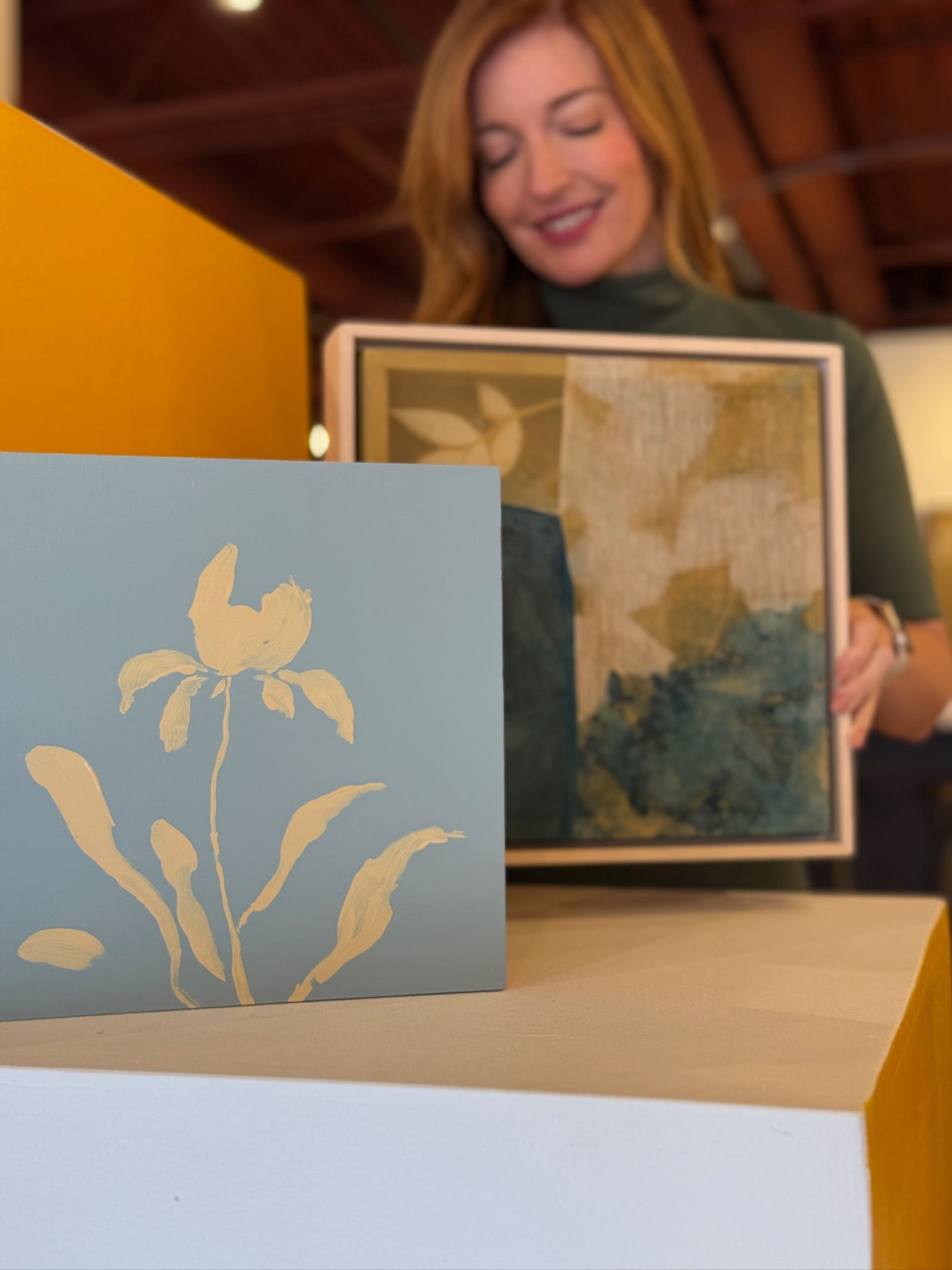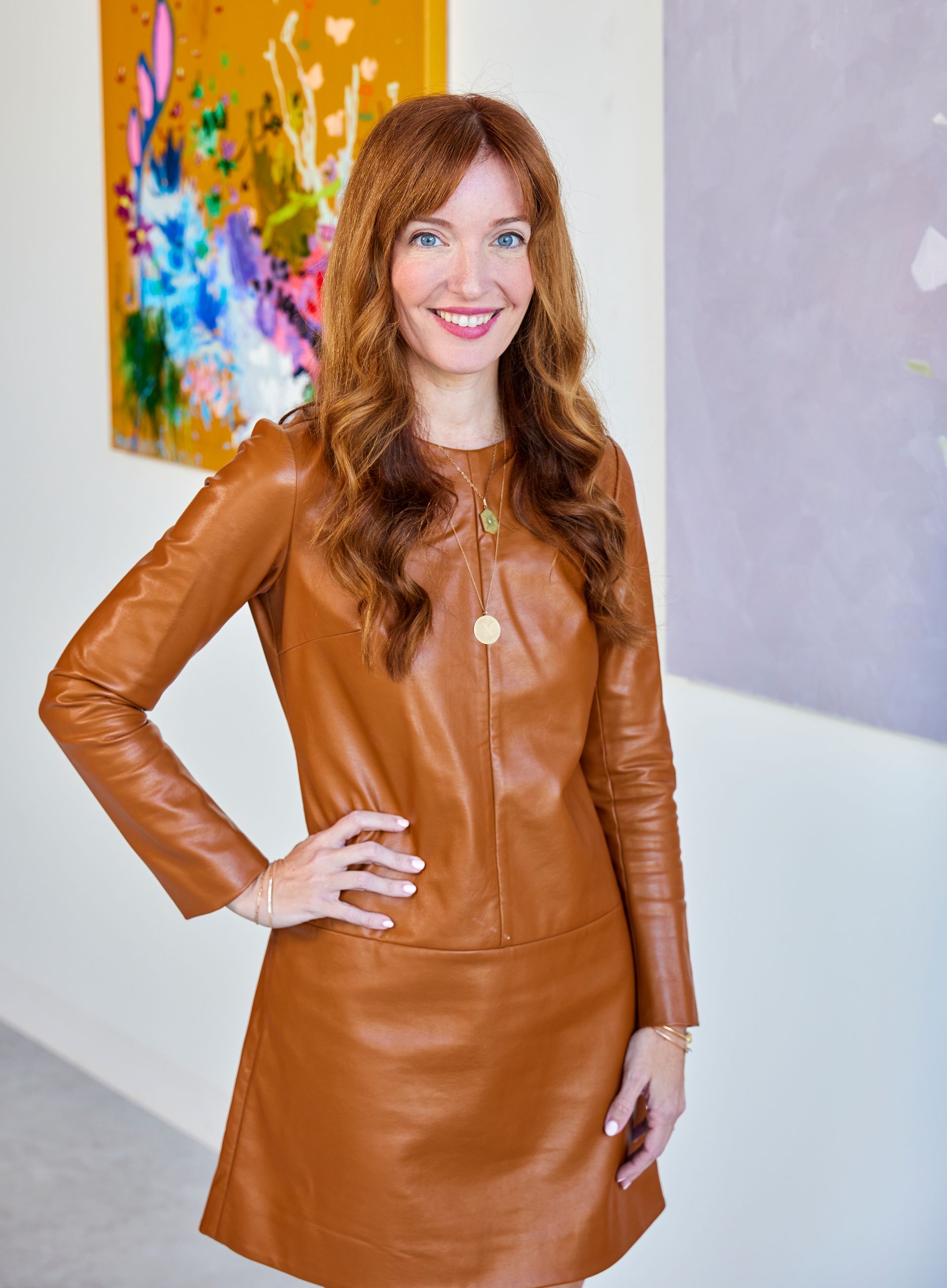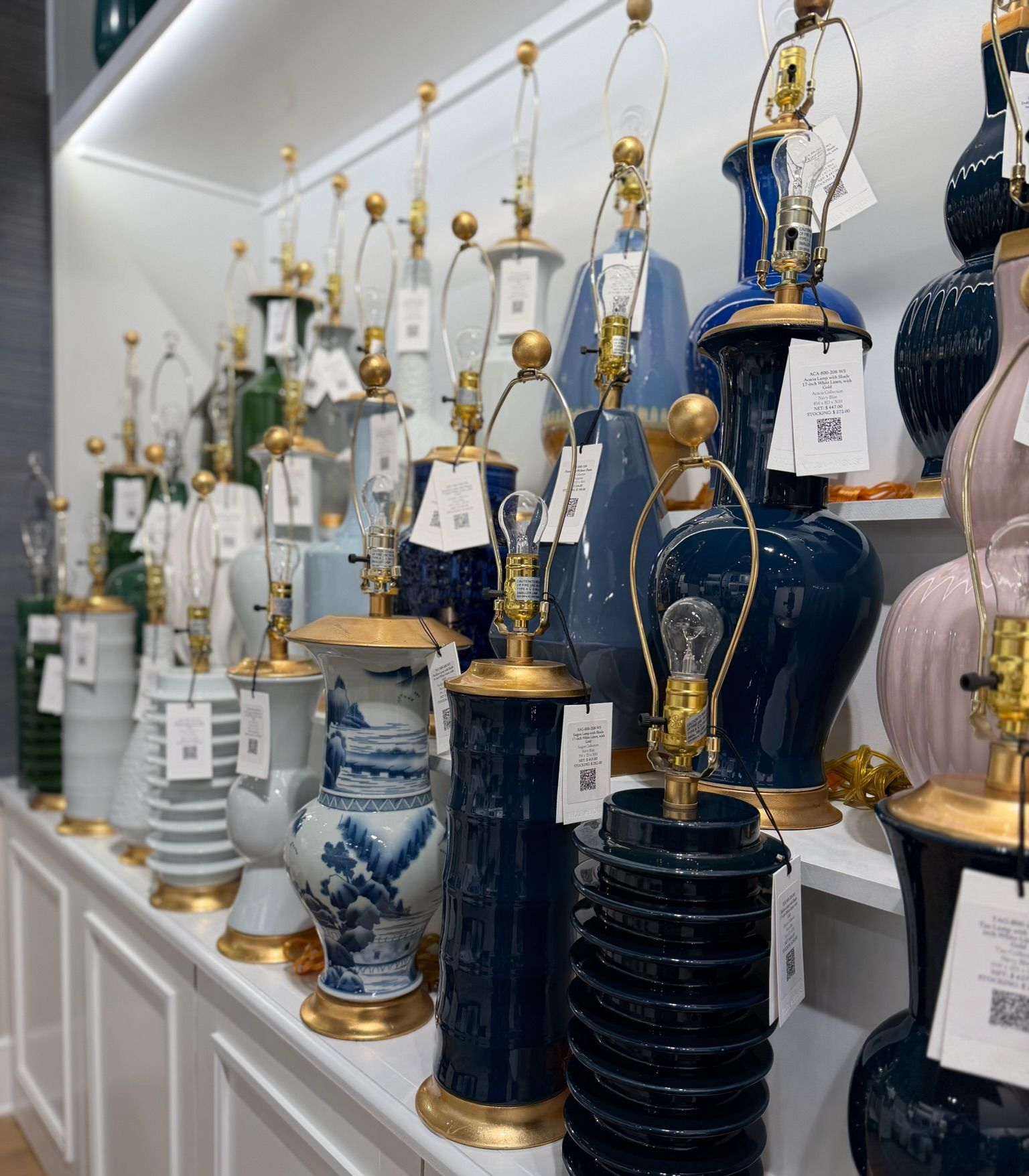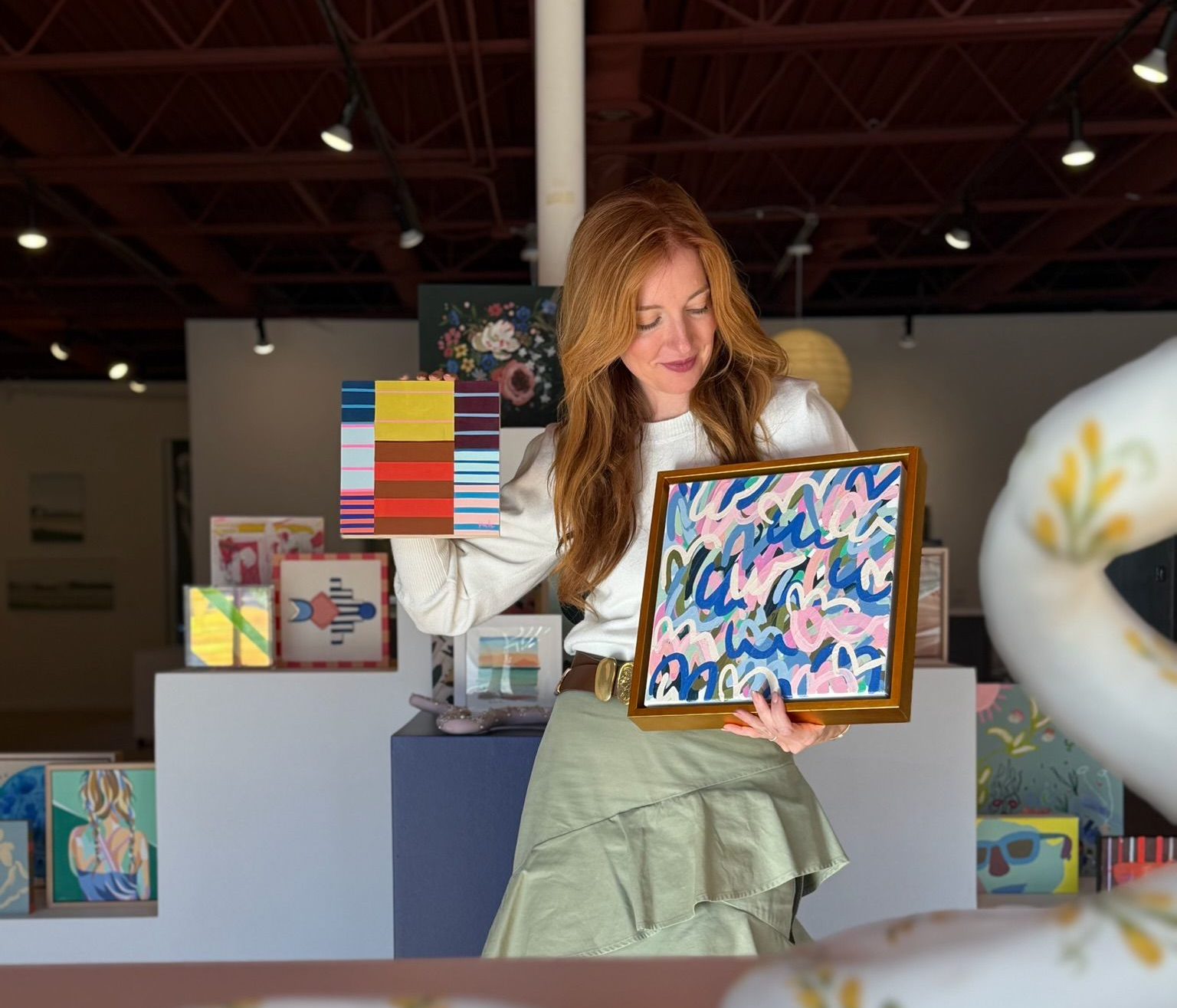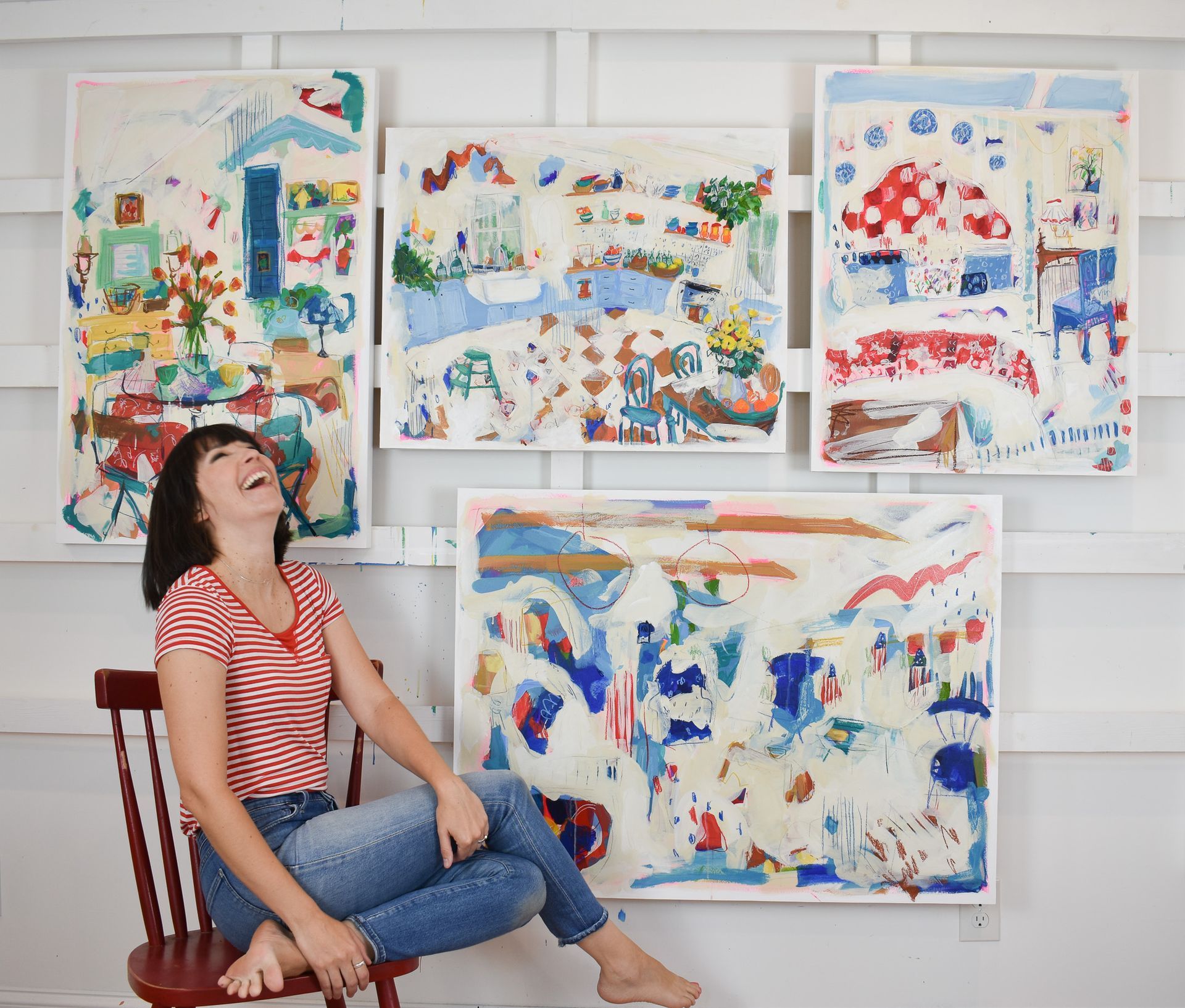You Asked, I Answered: Your Top Five Art Questions
Your top five questions, answered. These are the ones I hear most often when clients are buying art—and as a gallery owner (and fellow art lover), I completely get them, which is exactly why I always share these answers...
Question: “How do I mix originals and prints?”
I love mixing originals and prints in my own home, they each bring something different to a space. Originals are usually your statement-makers: they have texture, depth, and one-of-a-kind energy. Prints are amazing for layering around originals, filling smaller spots, or building out a gallery wall. To keep everything feeling intentional, I like to mix sizes, textures, and frames. Pair a larger original with smaller prints, mix in different frame styles, and don’t be afraid to combine a more minimal piece with something really bold. If the colors speak to each other, originals and prints can live together beautifully.
Question: “How do I know what size to buy?”
Sizing is one of the biggest questions I get—and it can make or break how art looks in your home. I always recommend starting with a visual mockup. Grab poster board or painter’s tape and mark out the size you think you want on the wall. Live with it for a day or two. It’s so much easier to shop when you already know the size you’re looking for. There is nothing worse than falling in love with a piece and realizing it’s completely the wrong size.
In the gallery, we use what I call the “two-thirds rule.” If you’re hanging a piece above furniture and your furniture is 96 inches long, you don’t want the art to match that width exactly. Instead, aim for a piece that’s about two-thirds the length of the furniture. For example:
- 96 inches ÷ 3 = 32 inches
- 32 × 2 = 64 inches
So in this case, I’d recommend a piece that’s around 64 inches wide, leaving about 16 inches of space on either side. It feels balanced without overwhelming the furniture. If you have a specific wall or tricky space, we do a lot of commissions with our represented artists. Meaning we can work with you on both style
and size to make sure it fits your home perfectly.
Question: “Do I need to frame everything?”
Short answer: no!
That’s one of my favorite parts about a well-curated collection, each piece has its own personality. Some look incredible framed, some feel more modern and relaxed unframed, and some prints are perfect just as they are. Mixing framed and unframed pieces can look really chic and collected-over-time. The only time I strongly recommend framing is when you have just one or two large pieces in a room and you want them to feel cohesive and finished. A great frame can help anchor the space.
But framing
everything, especially in a gallery wall of smaller works, can start to feel heavy and overthought. Little pieces shine when they each have their own story and style, not perfectly matching every other piece in the room. Framing is very personal, and there’s no “right” answer, it should support the art and the personality of your space, not compete with it.
Question: “What’s the best way to care for my art?”
Think of caring for your art the way you’d care for something special in your closet... mindful, but not fussy. A few simple rules:
- Avoid direct sunlight when possible, especially for works on paper or photography, to help prevent fading.
- Dust gently with a soft, dry cloth—no harsh cleaners or sprays directly on the artwork.
- Be mindful of humidity for works on paper or delicate mediums (maybe not your best choice next to your shower).
And if you have a piece you really love that feels fragile, professional framing with UV-protective glazing can be a great investment. Handled with a little care, your art will stay beautiful for years.
Question: “How do I choose between similar pieces?”
This is such a good problem to have, loving more than one piece! When you’re torn, I always tell people to go beyond “which is prettier?” and ask:
- What mood do I want my room to have? Calm, energetic, playful, cozy?
- Which colors actually work best with my space? Look at your furniture, rugs, and existing decor.
- Which piece feels the most like me (or us)? If you’re decorating with a partner or family, think about what you want the room to say about you.
And then my favorite question: Which piece can I not stop thinking about? That one is usually the winner. The piece you keep coming back to—the one you’d be sad to leave behind—is almost always the right choice.


